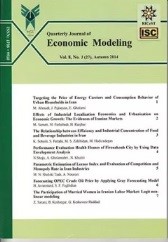Modeling DB-PAYG, Full Funded and Defined Contributions Pension Systems in Iran's Economy
Subject Areas : Labor and Demographic EconomicsHamid Rezazadeh 1 , mostafa sargolzaei 2 , Moslem Peymany Foroushany 3 , Hossein Tavakolian 4 , Meysam Amiri 5
1 - Department of Finance and Banking, Faculty of Management and Accounting, Allameh Tabatabaee University, Tehran, Iran
2 - finance and banking, faculty of management and accounting, university of allame tabatabaei, tehran, iran
3 - Department of Finance and Banking, Faculty of Management and Accounting, Allameh Tabataba’i University, Tehran, Iran
4 - Department of Economics, , Faculty of Economics, Allameh Tabataba’i University, Tehran, Iran
5 - Department of Financial and Banking, Faculty of Management and Accounting, Allameh Tabataba’i University, Tehran, Iran
Keywords: R13, JEL Classification: H55, J26 Key words: pension funds, Overlapping Generations Model, PAYG Pension Plan, Full Funded Pension Plan, Defined Contribution Pension Plan,
Abstract :
The present study simulates and compares three types of pension systems, DB-PAYG, Full Funded and Defined Contributions, and their impact on Iran’s macroeconomic variables. For this purpose, the General Equilibrium model of Overlapping Generations is designed based on the variables of the Iran economy. The results showed that the Full Funded pension system performs better than other systems in terms of capital stock, output and welfare. Also, among these three systems, the DB-PAYG system has the lowest amount of capital stock, output and welfare. Therefore, changing the current pension system of the country to a Full Funded pension system has been proposed as a reformed fiscal policy.
منابع
_||_


